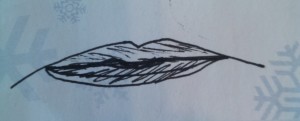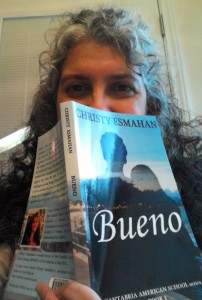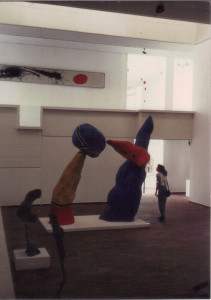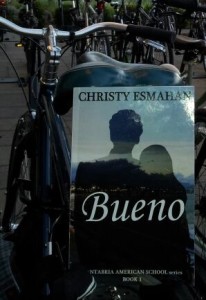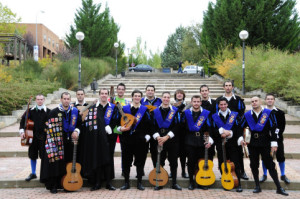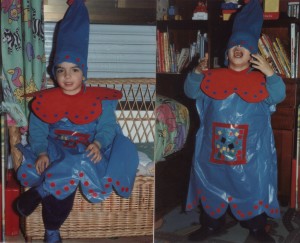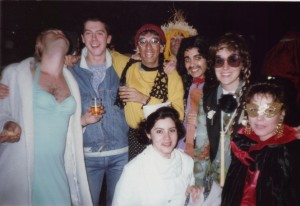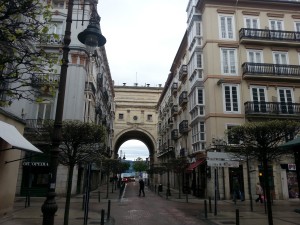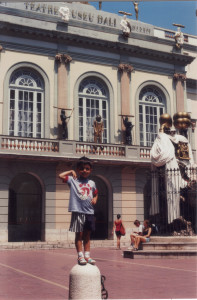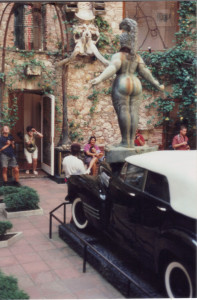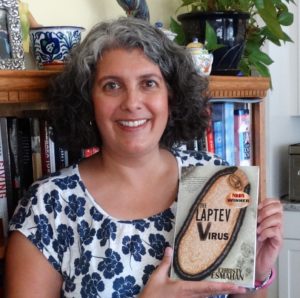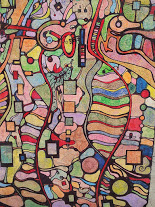
Salamanca art: Lauren often uses images of murals in her blog posts, so in her honor, here’s a mural in Salamanca, Spain.
Knock me over with a feather! I’ve got a wonderful success story to share with you today.
It begins late in 2013, during the final stages of writing The Cantabria American School series. The editor I had hired had sent me a huge list of issues that needed to be addressed, (rightly so), providing me with no less than 17 pages of comments and suggestions, and I had been slogging my way through them. In addition, I had decided to take my 700+page manuscript and break it into three books. That meant that each novel needed a separate story arc, characters needed to be developed more fully, and I needed to create more beginnings and endings than I had originally intended.
I was exhausted and discouraged, and even though I’d dedicated more than 5 1/2 years to writing this series, I felt like I was never going to be a published writer. Even more distressing was the fact that a friend of mine who is a successful writer gently suggested that I should go back to working in what I was trained to do and give up writing. The tasks ahead seemed completely unattainable and I was ready to walk away, throw in the towel, and forget about my dream of becoming a writer.
That’s when I stumbled upon Lauren Sapala’s blogs. Lauren is a writer and a writing coach based in San Francisco, and her posts were nothing short of a miracle for me. Posts such as “Why You Finishing Your Novel is Exactly What the World Needs” and a slew of others began to brighten my days. Lauren is a terrific writer and over the weeks and months as I continued to read her posts, hungrily digging through the archives, I became inspired to keep going and finish the task. Her blog is a treasure trove for writers: there are posts that address specific issues to do with characters or plot, and others more about life in general for writers and the special demons in the heads of all writers (not just mine!) Her blog is wealth of ideas and inspiration and I continue to greatly admire and benefit from her insightful writing.
I managed to complete Bueno and publish it, and then last month I published the second novel in the series, Sinco. Now, as I put the finishing touches on Brujas, the third one, I can honestly say that Lauren Sapala is a huge part of the reason I was able to keep going and finish writing these novels.
One day about a month ago I decided to reach out to her: I wrote to her, introducing myself and thanking her for inspiring me. I had been reading her posts constantly for six months now, and even though she didn’t know me, I was beginning to feel like she was a friend, always there with another cheerful and expertly presented blog post dealing with the craft of writing. In the middle of my e-mail, I became brave and decided to ask if she wouldn’t mind reviewing Bueno, a creation which she had been so instrumental in inspiring me to complete. I figured that most likely she wouldn’t answer me—after all, she has over 17,000 followers on Twitter, and over a thousand friends on Goodreads. Her whole life is about writers, all of whom are more well-known than me. Surely my little request would be one of a million and she would not have time to look at. I drafted my note to her about ten times, and read it to my husband over and over again before I finally pressed the “send” button.
And here’s the part where things began to turn surreal: first, she wrote back to me! It was a cheerful answer, much as her blog posts are.
Second, she agreed to read Bueno. I was over the moon just anticipating her taking a look at my creation, wringing my hands in worry that she’d not like it or find it sub-par, and wondering if I’d done the right thing in asking her to read it.
Then the third surprise came: she gave it five stars, calling it a “hidden gem”! It was a dream come true! And even If I do say so myself, it’s a terrific review, thoughtful, thorough and kind. Click here to read it.
So that’s my story of a miracle in my little corner of the universe! I hope that you too, dear reader, find miracles in the form of helpful souls like Lauren Sapala in your life, and if you do, please share your story–I’d love to read it!
If you enjoyed this blog post, you might also like my series of novels, Bueno, Sinco and Brujas, which takes place in Santander, Spain.


